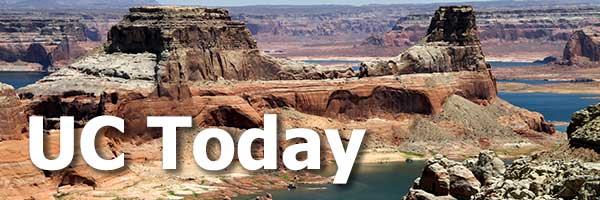 |
|
UC Today is the quarterly newsletter of the Bureau of Reclamation’s Upper Colorado Basin Region covering the states of Colorado, New Mexico, Utah and Wyoming. We look forward to sharing with you some of the projects and activities that we have been working on to manage, develop and protect water and related resources in an environmentally and economically sound manner in the interest of the American public. Summer 2023 |
||||||
| Upper Colorado Basin Region Office | Albuquerque Area Office Power Office | Provo Area Office |Western Colorado Area Office | Four Corners Construction Office |
||||||
|
from the |
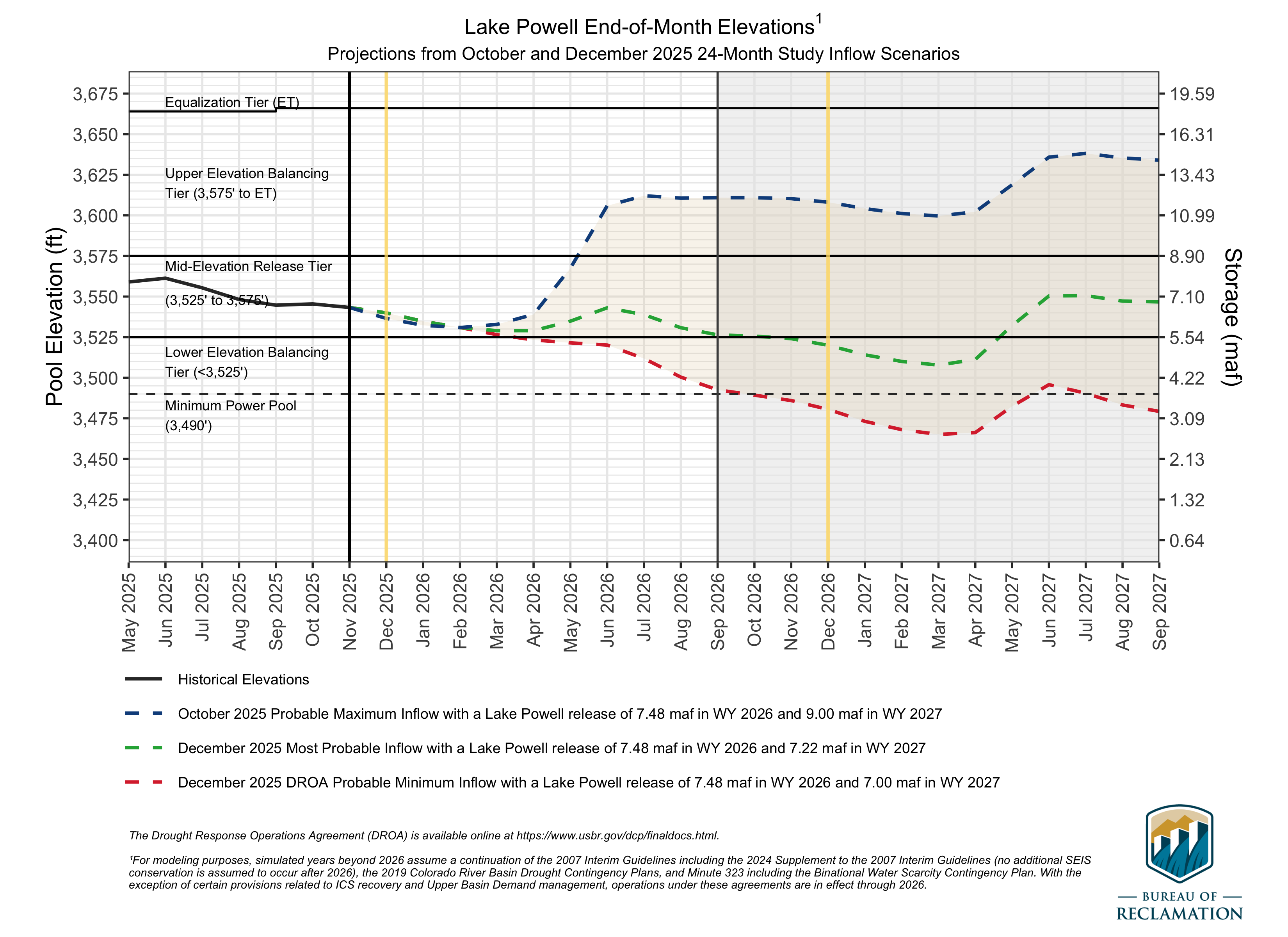 |
| Projected Lake Powell end-of-month physical elevations from the latest 24-Month Study inflow scenarios. Reclamation graphic |
Reclamation announces 2024 operating conditions for Lake Powell and Lake Mead
|
Regional reorganization continues to fill new positionsBy Upper Colorado Basin Public AffairsAs we continue to add talent to the region, many of those new positions that were created in the recent reorganization are finally being staffed. We are happy to announce that three division managers and four new group chiefs were recently selected, and our two newest divisions are well on their way to filling the rest of their billets. Additionally, Kent Kofford was recently selected as the new Deputy Regional Director, a position he has been temporarily filling for the last several months. Upper Colorado Operations OfficeThe Upper Colorado Region has gone "U-COO" for Colorado River operations! All groups with direct impact on Colorado River operations now fall under the Upper Colorado Operations Office (UCOO) headed by Deputy Regional Director [and now] Upper Colorado Operations Office Manager Katrina Grantz. This includes a new Adaptive Management and Water Quality Division and a Projects, Operations and Modeling Division; created by realigning previous groups from the Resources Management Division and the Power Office, respectively. Adaptive Management and Water Quality Division
Projects, Operations and Modeling Division
Resource Management Division
|
 |
UC Today – Help UCB Fight Food Insecurity!By Upper Colorado Basin Public AffairsEach year, the Feds Feed Families program provides an opportunity for federal employees to help fellow community members facing food and nutrition insecurity. As a region, we have set a goal to raise 15,000 pounds of food between now and Sept. 30, as part of the Feds Feed Families campaign. We have already raised 5,590 pound and are more than 1/3 of the way to reaching our goal. Nearly 1 in 6 children in our region does not know if they will get their next meal (a rate higher than the national average). By donating to local food banks, we can help alleviate the emotional and physical stress of food insecurity and allow kids to start a new school year on healthy footing. If each of our employees donated 12 pounds of food, we would be able to meet our goal in the next 4 weeks! With $1 worth of donations equaling 5 pounds of food, it is easier to make a positive impact than you might think. Where/How to donate:You are welcome to donate to any hunger organization you'd like, simply visit Help fight food insecurity! to find a list of tools for finding a food bank near you. From there, you can choose to either make food donations, volunteer your time, or make an unsolicited monetary donation. Register donation:Once you have made a donation, it is crucial to remember to register your donation using the UCB specific registration link: UCB Donation Registration. September 30th is the last day to register your donations.If you have any questions about FFF, please contact our region's Feds Feed Families Champion, Riley Martin at her direct email or through ucbpao@usbr.gov. We appreciate donations big and small and extend our thanks to those who have already donated. |
|
from the |
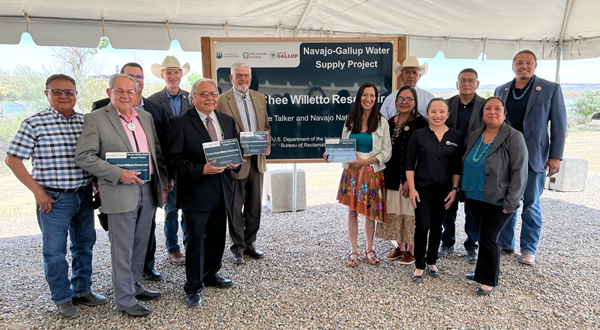 |
| (L-R) City of Gallup Mayor Louis Bonaguidi, PNM President and Chief of Operating Officer Don Tarry, Navajo OPVP Executive Administrator Arvin Trujillo, NGWSP Program Manager Bart Deming, Congresswoman Teresa Leger Fernández, State Engineer Mike Hamman, Commissioner Camille Calimlim Touton, Honorable Delegate Rickie Nez, and Navajo Nation Water Rights Commissioner Dr. Lani Tsinnajinnie. Reclamation photo |
Reclamation celebrates major milestone for the Navajo-Gallup Water Supply Project and Reclamation's 120th birthdayBy Sterling Acree, Four Corners Construction Office and Upper Colorado Basin Public AffairsOn June 9, the NGWSP celebrated the acquisition of the San Juan Generating Station water conveyance system which was purchased from the Public Service Company of New Mexico for $8 million. The acquisition of the water conveyance system included a reservoir which was renamed the Frank Chee Willetto Reservoir during the ceremony. Reclamation Commissioner Camille Calimlim Touton and New Mexico Congresswoman Teresa Leger Fernandez joined Navajo Nation, State, and local leaders at an event celebrating the acquisition of the water system and the continued progress and collaboration on the NGWSP.
"The acquisition of the Reservoir and Water Conveyance System is a major milestone, which will be a tremendous asset for the Navajo-Gallup Water Supply Project," said Reclamation Four Corners Construction Office, Construction Engineer & Manager Bart Deming. "Its incorporation represents a significant cost savings to the project while also increasing operational flexibility and reducing operational risk by providing off-river storage, allowing increased drought resistance to support a sustainable water delivery system. The storage in this reservoir gives us the ability to shut down the river intake and continue water deliveries in the event of another Gold King Mine Spill, until river water quality improves." During the ceremony, Reclamation and Navajo Nation leadership unveiled a new name for the former San Juan Generating Station Reservoir. The reservoir is now named after Frank Chee Willetto, a member of the Navajo Nation who proudly served as a Navajo Code Talker during World War II. Willetto also served on the Navajo Nation Council from 1974 to 1986 and held various other positions, including Navajo Nation Vice President from August 1998 to January 1999. Willetto remained active in his Tribal community and attended the signing of the Omnibus Public Land Management Act of 2009, which authorized the NGWSP, of which he was a huge proponent. He died in his home in Pueblo Pintado, New Mexico, on June 23, 2012, at the age of 87. 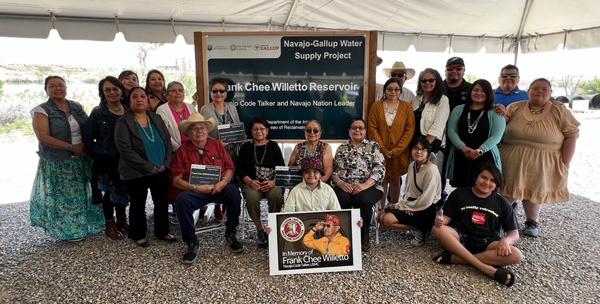 |
|
from the |
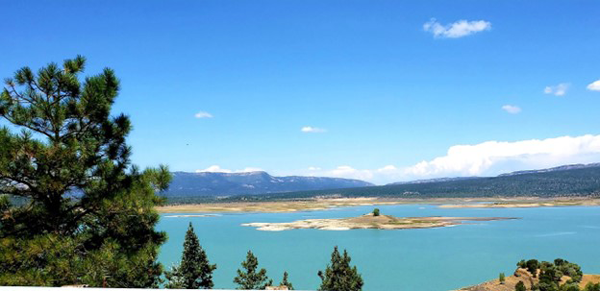 |
| Heron Lake State Park. Reclamation photo |
Water Swap authorized to help irrigators along the Rio GrandeBy Upper Colorado Basin Public AffairsWater managers signed an agreement in July to transfer up to 30,900 acre-feet of water stored in Abiquiu Reservoir for Albuquerque Bernalillo County Water Utility Authority to Middle Rio Grande Conservancy District and Reclamation, making it available for immediate use. This will be exchanged with a corresponding amount of MRGCD and Reclamation-leased water currently held in Heron Reservoir further north. The agreement between Reclamation, the Water Authority and the MRGCD to "swap water" was needed because of the inability to convey water downstream from Heron Reservoir due to construction activity at El Vado Dam, which water from Heron must move through on its way south. Reclamation manages the reservoirs and other infrastructure associated with the San Juan-Chama Project, which provides surface water for use by New Mexico communities and water agencies. The Water Authority, which has plenty of additional water in Abiquiu for Albuquerque's use this year, will be able to access the exchanged water in Heron at a later date. The ability to keep sending water downstream via this agreement is a huge benefit to irrigators, the riparian ecosystem and the endangered Rio Grande silvery minnow.
This water exchange agreement is a good example of interagency cooperation in the Middle Rio Grande. Modifications to El Vado Dam are being made to ensure the continued structural stability of the facility which provides irrigation water for the Middle Rio Grande Valley including six Pueblos. The first phase of construction is expected to be completed by the end of 2024. The second phase of construction, which includes replacement of the spillway and bridge next to the dam, is scheduled to begin in 2025. The highway over the dam will be closed during phase two of construction. New Mexico water officials coordinate in response to low river flow, lack of rainfallBy Upper Colorado Basin Public Affairs Reclamation officials from the Albuquerque Area Office joined water managers and fish biologists at the Middle Rio Grande Conservancy District to prepare for possible river drying in the Albuquerque area and are also working to mitigate the effects on endangered silvery minnow. Middle Rio Grande water users were given notice to anticipate changes to water availability and delivery schedules starting in mid-August. High temperatures and lack of rainfall have hindered the natural flow of the Rio Grande, critical to the delivery of irrigation water within the MRGCD and the riverine ecosystem. In response to higher-than-normal irrigation demand and lower than expected natural river flow, MRGCD began releasing water from the San Juan-Chama Project July 17. This release from upstream storage was needed earlier and at higher rates than anticipated. Approximately 40 percent of the current irrigation water supply is from SJCP storage releases, and the rest is from natural river flow, but MRGCD's SJCP water is projected to run out before August 23. Once all the SJCP water is released, MRGCD will rely solely on the natural river flow to continue making irrigation deliveries through fall. In addition to extreme drought conditions over the past four years, other factors impacting upstream storage and the Rio Grande flow include rehabilitation work on El Vado Dam and New Mexico's Rio Grande Compact debit. In addition to communicating with farmers and irrigators, Reclamation and MRGCD are working together to identify challenges facing wildlife in the Rio Grande.
Reclamation will release water to supplement Rio Grande flows in cooperation with the MRGCD and the U.S. Fish and Wildlife Service to target specific areas of the river with known silvery minnow habitat and to manage the rate of anticipated river drying. The Service will be coordinating minnow rescue efforts as drying occurs. |
|
from the |
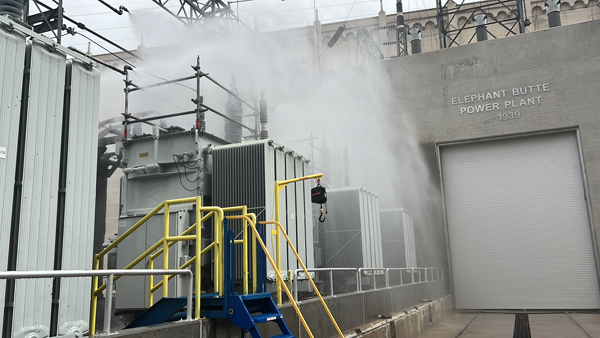 |
| Deluge valve live test. Reclamation photo |
Elephant Butte deluge valve replacementBy Larry Newberry, Mechanic – Elephant Butte PowerplantSafety is an important part of our operations, and during a deluge functional test for fire suppression on the high voltage transformers at Elephant Butte Powerplant, employees found that the deluge valve would not open and needed to be replaced. A deluge system is a fixed fire protection system which floods an area with pressurized water through a system of piping with open nozzles and sprinklers. An investigation of the system found the limit-torque deluge valve seized up and would need to be replaced. Market research was conducted to identify a new deluge valve and the Tyco DV-5 valve was found to meet NFPA requirements and provide reliable functionality for the critical fire suppression on K1 transformers. The new valve required piping configuration and wiring changes and Plant Mechanic Larry Newberry completed all the work necessary before installation. The fire water isolation valve had to be rebuilt, the deluge valve outlet piping had to be shortened, and a new connection to a water line was built to provide higher-water pressure to hold the new deluge valve diaphragm closed. Electronics Technician, Scott Stratton modified the control panel and re-configured the voltage for the deluge valve from 125 VDC to 24 VDC. This change will ensure communication to the differential relays and proper transformer protection, as well as notification in the control room. A dry run was conducted that proved the modified control panel and valve would function as expected, but before doing a live run of the new equipment, all spray nozzles were removed and flushed, and hoses were installed on them so they would drain to the tailrace. The transformer fire suppression deluge system had not been tested in over 18 years and this effort proved valuable as the flush discharged dirty water for about 5 minutes. The deluge lines were reconnected with the spray nozzles and a live test was conducted. This test not only provided spray coverage but tested the differential relay systems and notification functionality. The spray pattern observed provided confidence that the system would perform as needed during an actual fire. Thank you to the team at Elephant Butte Powerplant for getting this important safety work completed! |
|
from the |
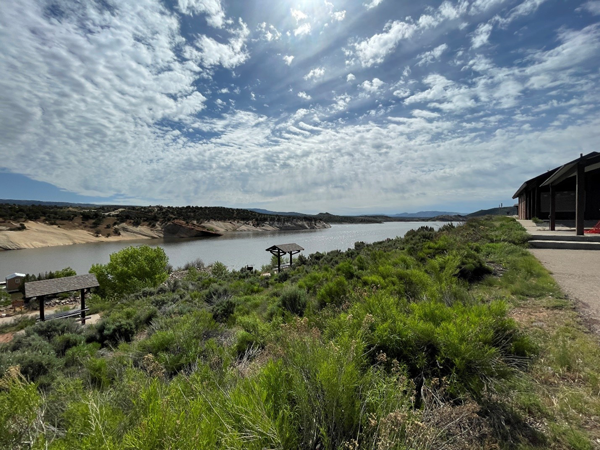 |
| Red Fleet Reservoir. Reclamation photo |
Provo Area Office's expertise helps grow recreational amenities throughout Utah State ParksBy Amee Andreason, Upper Colorado Basin Public AffairsThe Provo Area Office is helping build and restore campsites so quality amenities are available for enjoyable outdoor experiences. The office took part in several ribbon cuttings this summer to celebrate either the groundbreaking or completion of state campgrounds. 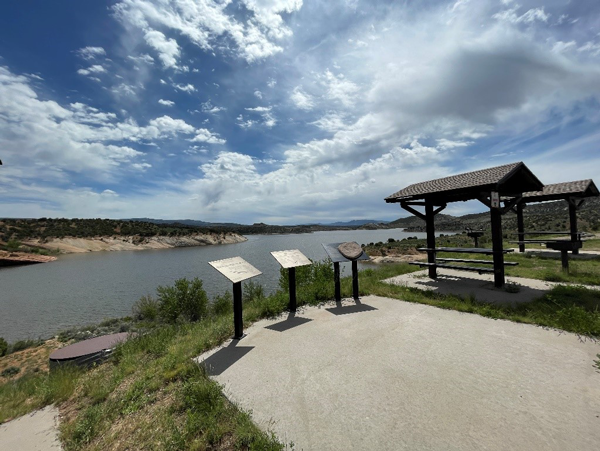 Red Fleet State Park recently had its groundbreaking to kick-off construction for a new renovation project. The Provo Area Office did the full redesign of this project which will consist of construction and renovation of the day-use areas, a complete redesign and reconstruction of the campground and managing construction until completion, slated for summer 2024. As the park's popularity has continued to increase, these renovations and improvements will accommodate more visitors comfortably and elevate guest experiences. Rockport, Echo, and Deer Creek also finished their restoration projects this year and kicked-off the summer season opening the new areas to the public. Echo State Park held a ribbon cutting in July for completion of phase II of the Echo State Recreation Project. The first phase was construction of the new Dry Hollow Campground (completed in 2020), and the second phase was updating the day-use area and marina. The Provo Area Office completed the National Environmental Policy Act process to assess the environmental considerations for planning, designing, and construction of this project. This project also required renegotiation of the 11-park agreement, which is the authority that allows state parks to occupy and manage recreation on Reclamation land, to add Echo State Park. Provo designed and managed construction for both the Dry Hollow Campground and the Red Rock Marina. The construction management was done in unison with Utah State Parks and the Utah Division of Facilities Construction and Management who solicited the contract. Rockport's new day-use area and Deer Creek's new addition of Fox Den campground are now open for the public. Both areas were designed by Meridian, hired by DFCM. The Provo Area Office provided expert advice and high-level input at construction meetings and offered liaison support for these projects. Echo, Deer Creek, and Red Fleet were part of cost-share agreements which allowed Reclamation to provide Federal funds. Rockport was almost entirely state funded. Check out the Echo State Park video for full updates. |
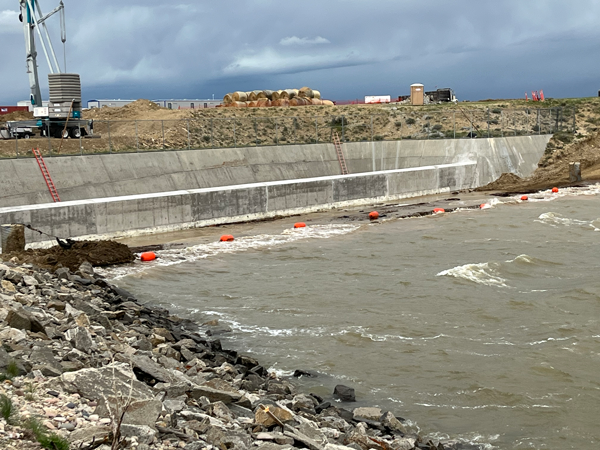 |
| This photo, taken May 31, 2023, shows the newly completed crest of Big Sandy Dam, measuring 5 feet higher than the previous crest. Reclamation photo by Rick Long |
A bigger Big SandyBy Becki Bryant, Upper Colorado Basin Public AffairsBig Sandy Reservoir is now bigger, with a higher crest constructed just in time to capture this past spring's remarkable runoff. 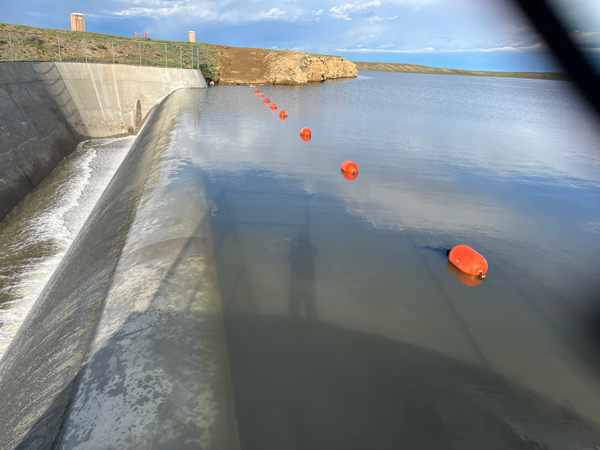 The construction project, which started in October 2021, included raising the crest of the spillway at Big Sandy Dam by 5 feet, excavating and rehabilitating existing dam and dike embankments, modifying the outlet works, toe drain, filter trench and feeder canal, and installing a cement-bentonite cutoff wall. The work reached substantial completion in August 2023, increasing the reservoir's total storage capacity to 52,300 acre-feet – an increase of 13,700 feet. The additional storage will improve the operation of the reservoir, allowing for more consistent water deliveries throughout the irrigation season. "The increased storage capacity allows the reservoir to capture more spring runoff, providing additional carryover water from wet to dry years and more irrigation water to extend the irrigation season," said Paul Christensen, Deputy Area Manager of Reclamation's Provo Area Office. During peak runoff in June, Big Sandy Reservoir rose almost 1 foot per day – two times the average. The high inflows exceeded the reservoir's capacity, forcing water over the newly constructed higher spillway for a few days. 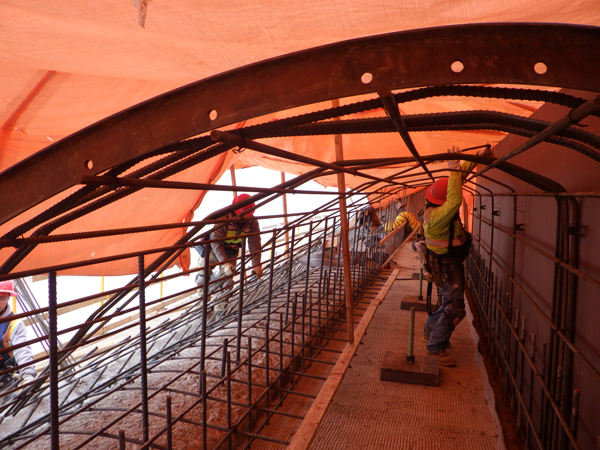 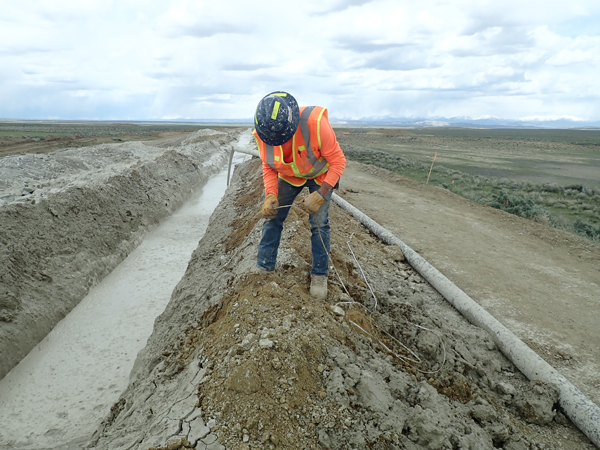 "Construction stayed on track – even finished a few months ahead of schedule – and because of that, we were able to capitalize on the spring's heavy runoff, capturing more of that water than we could have in years past because of the higher crest," said Spencer Strand, civil engineer with Reclamation's Provo Area Office. Currently, the water level in Big Sandy reservoir is approximately 20 feet higher than this time last year and is storing nearly 39,000 acre-feet – that's just over its previous total storage capacity of 38,600 acre-feet with the lower crest. "The modifications to the feeder canal and headworks support greater flexibility and efficiency in delivering and storing excess water," said Strand. Big Sandy Dam is a major storage facility of the Eden Project. The Big Sandy dam, dike and reservoir are located on Big Sandy Creek, approximately 45 miles northwest of Rock Springs and approximately 10 miles north of Farson, Wyoming. The reservoir provides storage for irrigation, flood control and recreation. It is typically operated to maintain as much storage as possible for irrigation use. Irrigation flows are released directly into the Means Canal for irrigation of Eden Project lands. A larger reservoir and improved infrastructure will help meet a portion of the existing irrigation demand and help secure the water supply in the Farson/Eden areas. The Wyoming Water Development Commission proposed the construction project to Reclamation. Reclamation's Provo Area Office, with help from the Technical Service Center, provided most of the project support including the risk analysis, value planning study and development of appraisal level design alternatives needed for the environmental assessment required by the National Environmental Policy Act. Once the project was approved, the Provo Area Office executed contracting and scheduling and oversaw engineering design and construction. "It's good to get to the finish line on a project like this that provides great benefits to the water users in the area," said Christensen. "The Provo Area Office did an excellent job keeping work on schedule, ensuring we didn't miss the opportunity to capture and store additional water. To have Big Sandy Reservoir sitting at 79% capacity this late in the irrigation season is a positive position to be in and provides greater water security for those that depend on Big Sandy Reservoir for their water needs." |
|
from the |
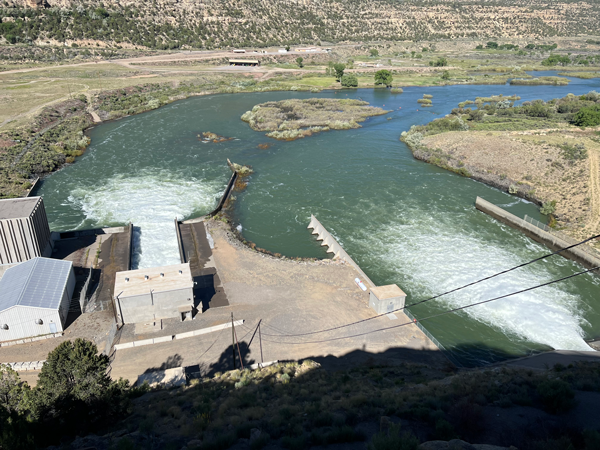 |
| Water is released from Navajo Dam from the main outlet works hollow jets. Reclamation photo |
Navajo Reservoir Spring 2023 ReleasesBy Justyn Liff, Western Colorado Public AffairsHigh snowpack in the San Juan River Basin last spring led to an above-average inflow into Navajo Reservoir located on the New Mexico/Colorado border, which allowed for an extended high flow release from Navajo Dam in late May and early June. The purpose of the spring high flow release is to remove excess sediment that has accumulated during regular flows and to improve the habitat and wetland areas for the endangered Colorado pikeminnow and razorback sucker. Release schedules and quantities from Navajo Reservoir through Navajo Dam are determined by the Record of Decision for Navajo Reservoir Operations that specifies different volume releases based on the reservoir inflow forecast and storage levels. Once the release volume has been determined, Reclamation coordinates the timing and length of target releases with the San Juan River Recovery Implementation Program (SJRIP) and interested stakeholders. This year's above average hydrology led to a release that peaked for 23 days and achieved three of the four main flow targets set by the SJRIP. The flow targets are both by flow and duration and are measured at the USGS San Juan River at Four Corners gauge. "It is important to consider a wide range of outcomes when modeling for the water year, so you are prepared when final numbers come in and you have an operating plan for the actual inflow," said Susan Behery, hydraulic engineer for the Western Colorado Area Office, who models and plans for the estimated inflow into the reservoir. High flow releases are dependent on weather, inflows and on-the-ground conditions; it takes a lot of coordination and flexibility to set the schedule. Because operations are always subject to changes, the schedule is coordinated daily with local, state, and federal agencies to ensure objectives are met in a safe manner. "Coordinating operations across three states (Colorado, New Mexico and Utah) is complex and involves daily discussions with upwards of 50 emergency managers, stakeholders, city officials, weather forecasters and more," said Ed Warner, Western Colorado Area Office, Area Manager. "Reclamation's priority is safety during high flow releases." Spring 2023 releases ramped up slowly staring on May 12, with a goal of peaking at 5,000 cubic-feet-per-second (cfs) for approximately 21 days before ramping back down. The Nature Conservancy (TNC) and New Mexico Interstate Stream Commission (NMISC), who have a 10-year agreement with the Jicarilla Apache Nation to lease up to 20,000 acre-feet of water per year, requested that 15,000 acre-feet be added as additional days to the peak release. This brought the total number of planned days at peak to 23. 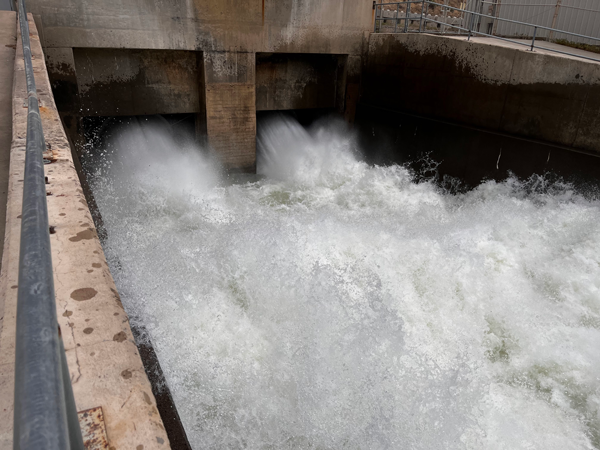 Navajo releases ended up peaking at 4,600 cfs on May 30, just shy of the maximum release of 5,000 cfs, due to highwater concerns caused by sediment and changes to the river channel since the last spring release. The release remained at peak until June 15, and ramp down was completed by June 26. Three of the four critical habitat reach flow targets were met and the reservoir filled in a slow and safe manner to 81% full, which is significant after several years of drought. "This year's spring release from Navajo Reservoir was successful in providing flood control at Navajo Dam and channel maintenance downstream of the dam, and it achieved all possible flow goals in the critical habitat for endangered fish given the hydrology available," said Warner. |
|
In case you missed it: |
|
Reclamation Celebrates 120 YearsThe Bureau of Reclamation was established June 17, 1902, and this past year celebrated its 120th anniversary with events held in our five Regions, and at our Denver Offices. |

Interior Region 7 • Upper Colorado Basin 125 South State Street, Room 8100 Salt Lake City, Utah 84138-1147 If you would like to subscribe or unsubscribe to this newsletter, please send an email with your first and last name to ucbpao@usbr.gov. |